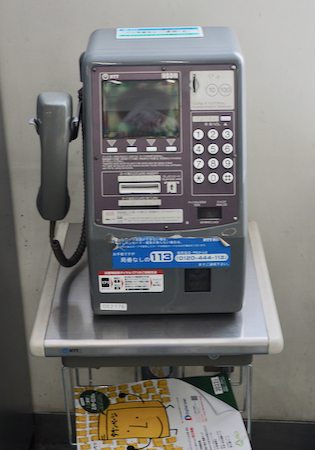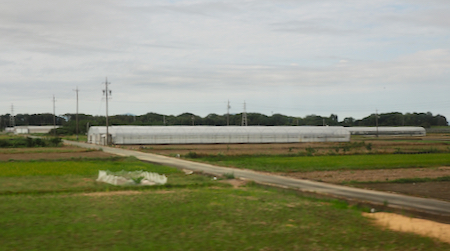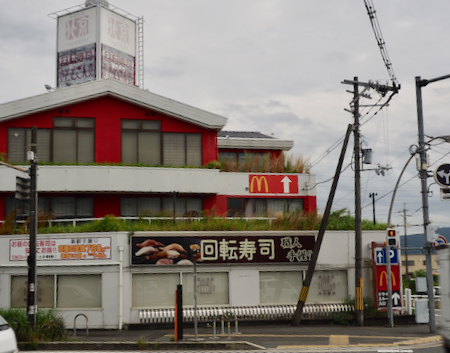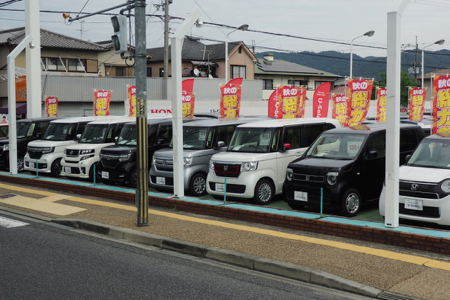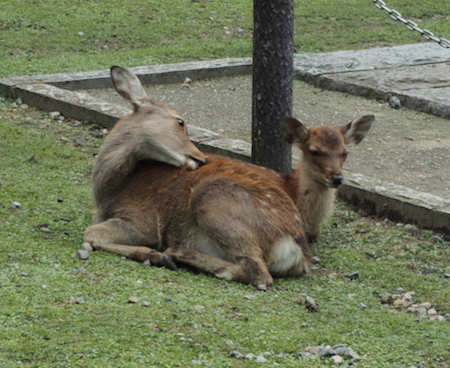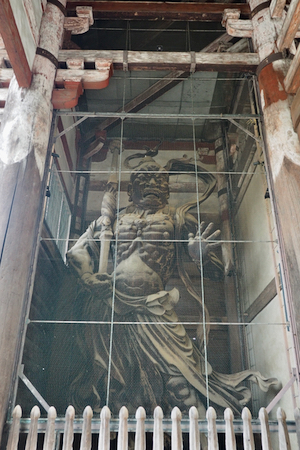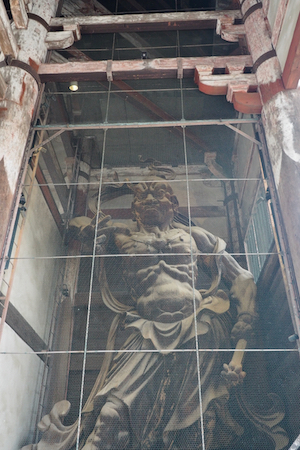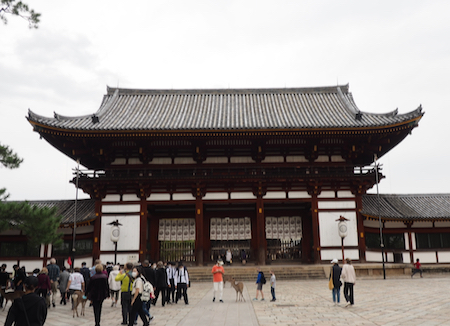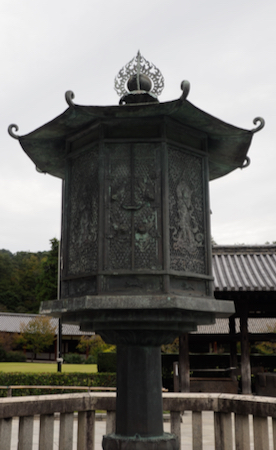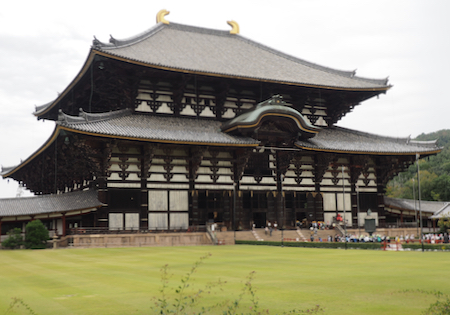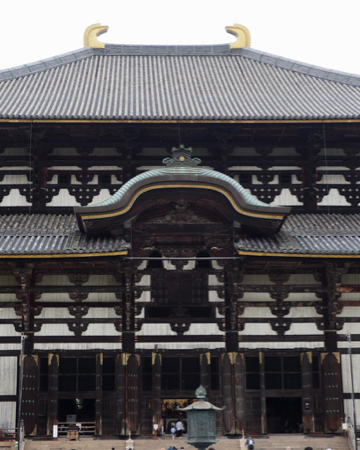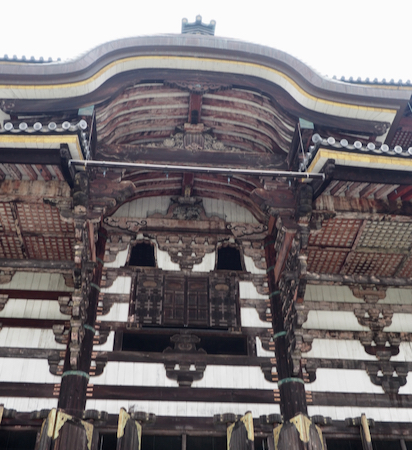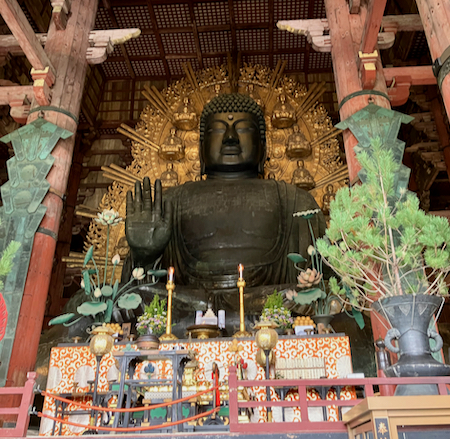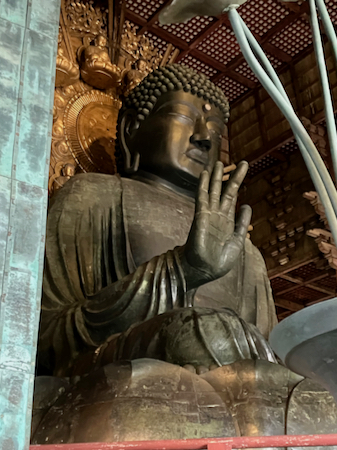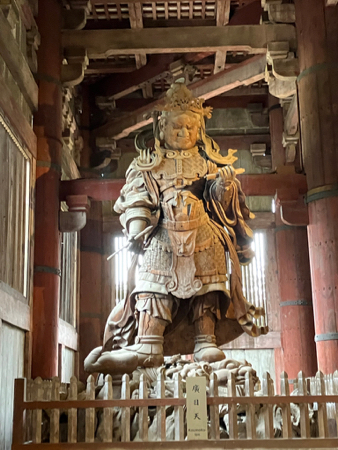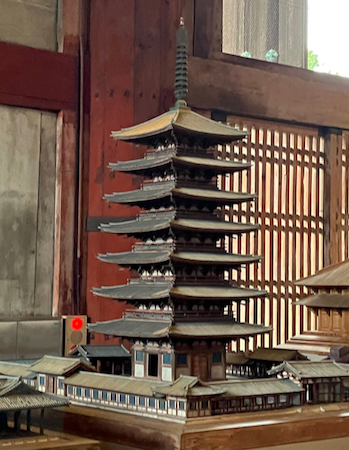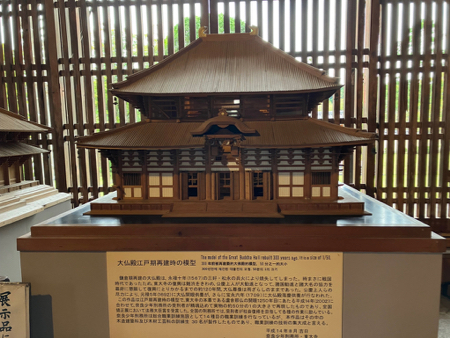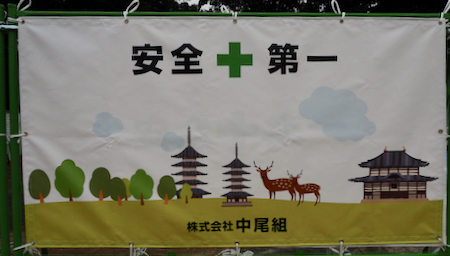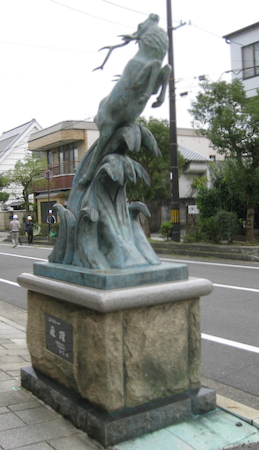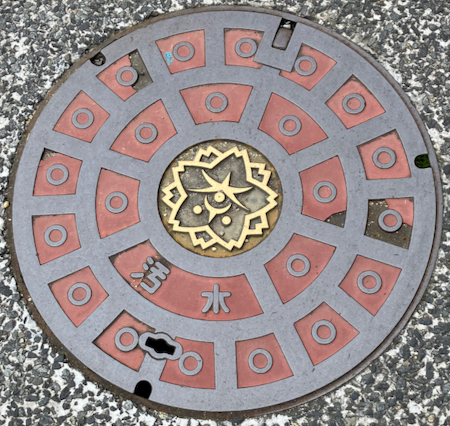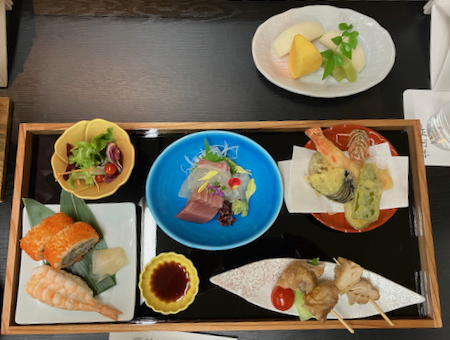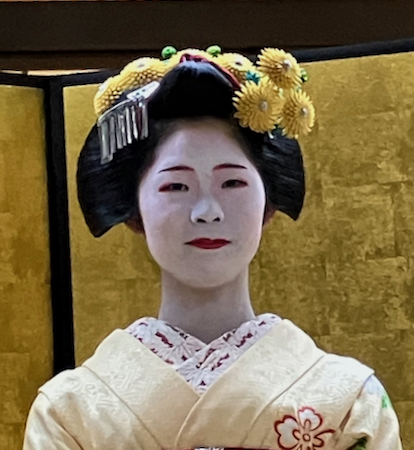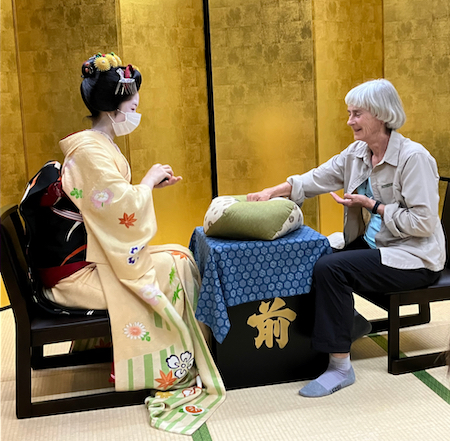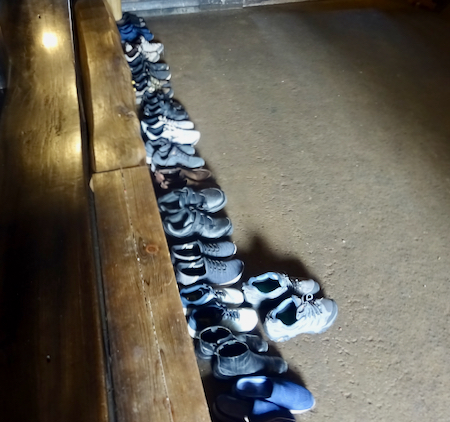Wed., 10/12 - Toba to Kyoto
The group took cabs to cross the street to the Toba train station and then took a local limited express to Nara. Nara was the capital city of Japan in the 700's, until 794, when the emperor moved all of the government to Kyoto.
Toba train station
Pay phone with phone book!
Green houses and fields
One of Japan's really small cars at a gas station
A McDonald's is nearby
The size of the cars and trucks is just amazing.
They look like a bunch of miniatures or toy vehicles
In Nara we were taken to the Todaiji Buddhist Temple.
There are four ranks of Buddha statues:
1 - Nora - the enlightened Buddha
2 - Bosatsu - approaching enlightenment (has 100 hands)
3 - Myo-o - protector Buddhas that look angry
4 - Tembu - Indian guardians who are deities of music and danceOur group walked along with hundreds of elementary school kids passing the hundreds (seemed like it) of tame deer walking and pooping all over the park, through the 12th c. Nandaimon Gate with an angry Myo-o on each side, up to the Daibutsuden Hall that houses the Great Buddha.
The grounds at Todajii are populated with a huge number of free-roaming deer.
These are cute, but they are pests.
Todaiji Temple - Nandaimon Gate
Lots of school children visit the temple
Myo-o - guardians of the gate
Myo-o - guardians of the gate
Sorin - vertical shaft (finial) which tops a Japanese pagoda
Todaiji Temple - Daibutsuden Hall
Japanese teachers - nice sense of humor
Traditional lantern - A Toro
Daibutsuden Hall
Daibutsuden Hall
Façade detail - Daibutsuden Hall
At the Todaiji Temple, the Great Buddha (Daibutsu or Nyorai or Nora) is in the middle and is 52 feet high. He has two Bodhisattvas with him, one on each side. There are four Myo-o guardians, one in each corner.
The current temple was built in the 15th c. and was built over the sitting Nyorai. The temple has caught fire several times and the present structure is the “largest wooden structure” in the world - we have heard this before.
The Great Buddha (Daibutsu)
The Great Buddha (Daibutsu)
Figures surrounding the Great Buddha (Daibutsu)
Booted foot of the Buddha
Nyaroi
Koumokuten - guardian
Tamonten - guardian
Guardians - carved wood heads - there were several
Model of former Daibutsuden Hall
Model of former Daibutsuden Hall
Binzure (Pindola Bharadvaja)
Banner says "Safety First"
Statue of a stag along the street in Nara
Nice manhole cover
Following the temple visit and a brief break at the hotel, we went to a handicraft center with nice gift items and then went for dinner at the center. The food was traditional. The group had sushi, Gale had chicken.
Dinner including sashimi and lobster tail
Gale's non-fish dinner - chicken and tofu
After dinner, we were entertained by a 17-year-old Maiko. A Maiko is an apprentice Geisha. In Kyoto Geisha are called Geiko or Maiko (a young apprentice), and they are actually professional entertainers hired to perform and interact with guests during dinners and other occasions.
Girls ages 15 to 20 can become Maiko. They are taken in by a matron and taught to entertain at dinners (usually all men). At age 20 they can quit or become Geiko. Maiko wear their own hair and Geiko wear wigs.
We asked questions of our Maiko. It takes her two hours to get made up and dressed. The 25 foot long cummerbund is pulled very tightly. She spends all day practicing at least 12 dances and learns to play a flute-like instrument and a three-stringed lute. She is not allowed to have or use a cell phone, cannot go out by herself, can go home for two days every month, but is allowed to watch TV. There are 200 Geiko and 70 Maiko in Kyoto.
A 17-year-old Maiko
The back of her costume
The end of her dance
Several of the group played the game of Konpira-fune-fune
Gale playing Konpira-fune-fune
Gale playing Konpira-fune-fune
Another "we were there" photo
Maiko and Geiko link. Persist through the many ads. This is an interesting article and includes a clip of a Maiko and Geiko playing Konpira-fune-fune.
I have failed to write about how many, many times we have had to take our shoes off to walk into a restaurant, temple, hotel, home, etc. Marge and I try to always carry our "hospital" socks to put over our socks because they have rubberized strips on them to help us not slip. It is difficult for us to balance and take off or put on shoes without stepping on the wrong surface in socks or in our shoes. Japanese children learn this at a very young age.
By "wrong" surface the Japanese mean: There is the outside or masonry surface where shoes are worn and there is the inside, often tatami mat surface, where shoes are never worn. The trick is to take off the first shoe while standing on the "outside" surface, put that foot onto the "inside" surface, transfer your weight to the "inside" foot, and take off the second "outside" shoe without putting the outside (stockinged or bare) foot on the "outside" surface before stepping onto the "inside" surface. The process is reversed when putting the shoes back on.
Typical line-up of shoes at a restaurant, home, etc.
| Return to Top | Return to Itinerary | Return to Trips page to view other trips | Return to Dreamcatcher Home Page |

